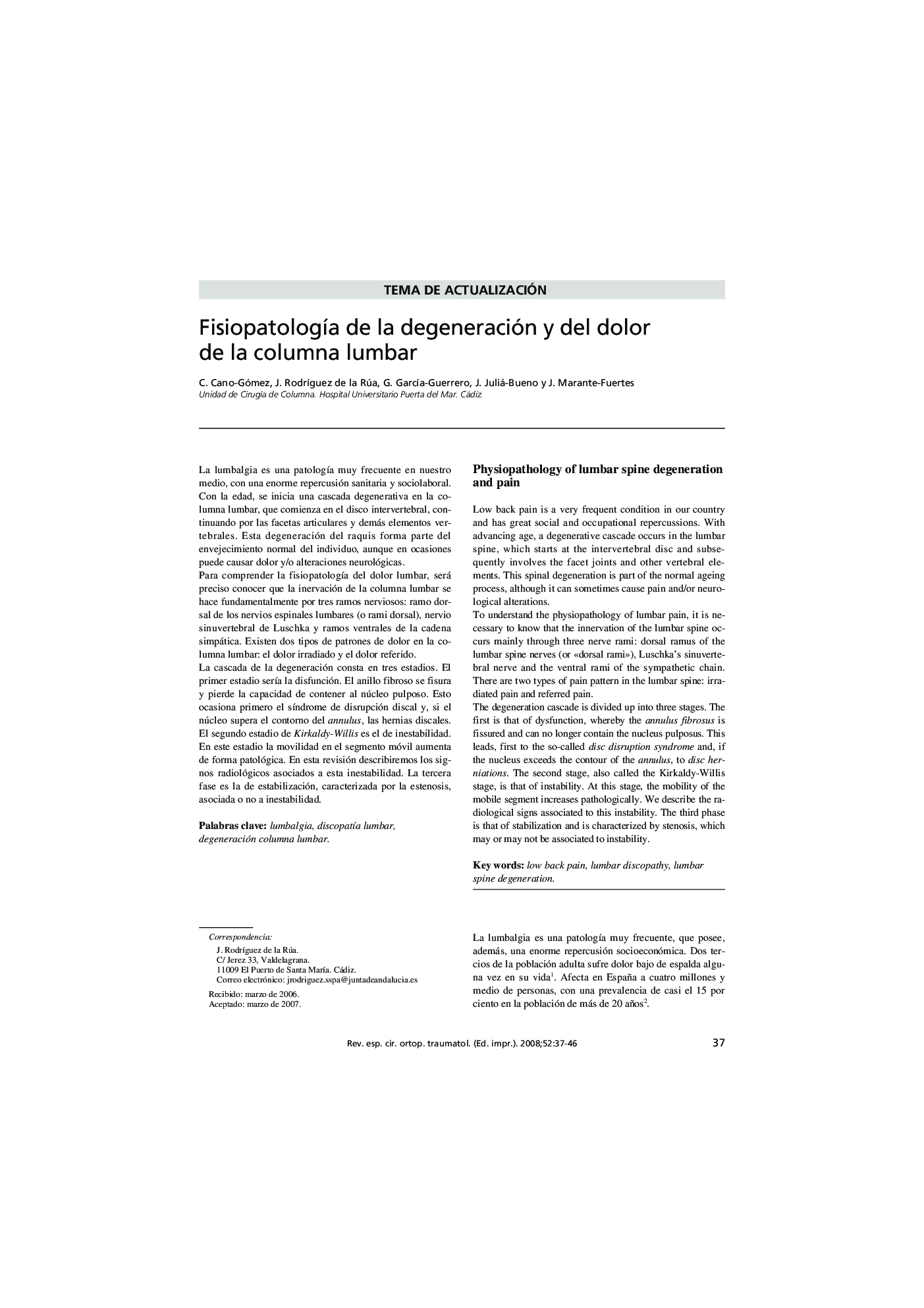| کد مقاله | کد نشریه | سال انتشار | مقاله انگلیسی | نسخه تمام متن |
|---|---|---|---|---|
| 4086776 | 1267974 | 2008 | 10 صفحه PDF | دانلود رایگان |

La lumbalgia es una patología muy frecuente en nuestro medio, con una enorme repercusión sanitaria y sociolaboral. Con la edad, se inicia una cascada degenerativa en la columna lumbar, que comienza en el disco intervertebral, continuando por las facetas articulares y demás elementos vertebrales. Esta degeneración del raquis forma parte del envejecimiento normal del individuo, aunque en ocasiones puede causar dolor y/o alteraciones neurológicas.Para comprender la fisiopatología del dolor lumbar, será preciso conocer que la inervación de la columna lumbar se hace fundamentalmente por tres ramos nerviosos: ramo dorsal de los nervios espinales lumbares (o rami dorsal), nervio sinuvertebral de Luschka y ramos ventrales de la cadena simpática. Existen dos tipos de patrones de dolor en la columna lumbar: el dolor irradiado y el dolor referido.La cascada de la degeneración consta en tres estadios. El primer estadio sería la disfunción. El anillo fibroso se fisura y pierde la capacidad de contener al núcleo pulposo. Esto ocasiona primero el síndrome de disrupción discal y, si el núcleo supera el contorno del annulus, las hernias discales. El segundo estadio de Kirkaldy-Willis es el de inestabilidad. En este estadio la movilidad en el segmento móvil aumenta de forma patológica. En esta revisión describiremos los signos radiológicos asociados a esta inestabilidad. La tercera fase es la de estabilización, caracterizada por la estenosis, asociada o no a inestabilidad.
Low back pain is a very frequent condition in our country and has great social and occupational repercussions. With advancing age, a degenerative cascade occurs in the lumbar spine, which starts at the intervertebral disc and subsequently involves the facet joints and other vertebral elements. This spinal degeneration is part of the normal ageing process, although it can sometimes cause pain and/or neurological alterations.To understand the physiopathology of lumbar pain, it is necessary to know that the innervation of the lumbar spine occurs mainly through three nerve rami: dorsal ramus of the lumbar spine nerves (or «dorsal rami»), Luschka's sinuvertebral nerve and the ventral rami of the sympathetic chain. There are two types of pain pattern in the lumbar spine: irradiated pain and referred pain.The degeneration cascade is divided up into three stages. The first is that of dysfunction, whereby the annulus fibrosus is fissured and can no longer contain the nucleus pulposus. This leads, first to the so-called disc disruption syndrome and, if the nucleus exceeds the contour of the annulus, to disc herniations. The second stage, also called the Kirkaldy-Willis stage, is that of instability. At this stage, the mobility of the mobile segment increases pathologically. We describe the radiological signs associated to this instability. The third phase is that of stabilization and is characterized by stenosis, which may or may not be associated to instability.
Journal: Revista Española de Cirugía Ortopédica y Traumatología - Volume 52, Issue 1, February 2008, Pages 37–46